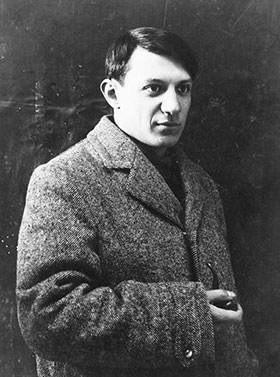- Overview
-
Artemisia Gentileschi was an Italian Baroque painter, today considered one of the most accomplished painters in the generation following that of Caravaggio. In an era when female painters were not easily accepted by the artistic community or patrons, she was the first woman to become a member of the Accademia di Arte del Disegno in Florence and had international clientele.
She specialized in painting pictures of strong and suffering women from myths, allegories, and the Bible- victims, suicides, warriors. Some of her best known themes are Susanna and the Elders (particularly the 1610 in Pommersfelden) and Judith Slaying Holofernes (most famous is her 1614-20 in Galleria degli Uffizi) and Judith and Her Maidservant (her version of 1625 at the Detroit Institute of Arts) that scholars currently know of.
- Career
-
- Artemisia Gentileschi moved to Florence following her marriage to a native of the city and in the year 1616 she became the first to enter the Florence Academy of Design. During her time in Florence she became well acquainted with the well-known personalities from the world of arts as well as people who had ties to the influential Medici family.
- During her time in Florence, Artemisia Gentileschi helped Michelangelo’s nephew Michelangelo Buonarroti by supplying him with a painting that was to adorn the ceiling of a gallery. Her other works during this time include ‘The Conversion of Magdalene’, ‘Self-Portrait of a Lute Player’ and ‘Judith and her Maid servant’. In 1621, Gentileschi went back to Rome.
- Artemisia Gentileschi spent most of the 1620s in Rome and later on in Venice. During this period she was fascinated with the work of Caravaggio and some of the works of this period include ‘Portrait of Gonfalonieri’, ‘The Sleeping Venus’ and ‘Esther and Ahasuerus’.
- Artemisia Gentileschi moved to Naples in 1630 since it was a city that had the reputation of being very lucrative for artists and during her stint in the city she worked on paintings that were meant for cathedrals. ‘Birth of Saint John the Baptist’ and ‘Corisca and the Satyr’ are notable works from this period.
- In 1638, Artemisia Gentileschi went to work with hER father Orazio in London, England, to work for King Charles I. They worked on the paintings that constituted the decoration of the Great Hall at the Queen’s House. She continued to work in London for a few years and then went back to Naples.
- Artemisia Gentileschi moved to Florence following her marriage to a native of the city and in the year 1616 she became the first to enter the Florence Academy of Design. During her time in Florence she became well acquainted with the well-known personalities from the world of arts as well as people who had ties to the influential Medici family.
- Legacy
-
The first writer to produced a novel about the figure of Artemisia was Anna Banti, wife of art critic Roberto Longhi. She started the book in 1947, to be called Artemisia. It is written in an "open diary" form, in which she maintains a dialog with Artemisia, trying to understand why she finds her so fascinating.
Artemisia, and more specifically her painting Judith Beheading Holofernes, are referred to in Wendy Wasserstein's 1988 play, The Heidi Chronicles, where the main character lectures about the painting as part of her art history course on female painters.
Canadian playwright Sally Clark wrote several stage plays based on the events leading up to and following the rape of Artemisia. Her Life Without Instruction was commissioned by Nightwood Theatre in 1988, and premiered at Theatre Plus Toronto on August 2, 1991.
The Passion of Artemisia, an historical novel translated into 20 languages, was published in Italy by Susan Vreeland; it positions itself in the wave of the popularity of the feminist account of Artemisia Gentileschi.
In 1999, the French writer Alexandra Lapierre became fascinated by Artemisia and wrote a novel about her, derived from scrupulous study of the painter and the historical context of her work. The novel seeks to understand the relation between Artemisia the woman and Artemisia the painter, and ends with the relationship with her father, composed of both love insufficiently expressed, and a latent professional rivalry.
- On View
-
- Virginia Museum of Fine Arts, Richmond
- Uffizi Gallery, Florence
- Moravian Gallery, Brno
- Royal Collection Trust,
- Museum of Fine Arts, Budapest
- Metropolitan museum of Art, New York City
















